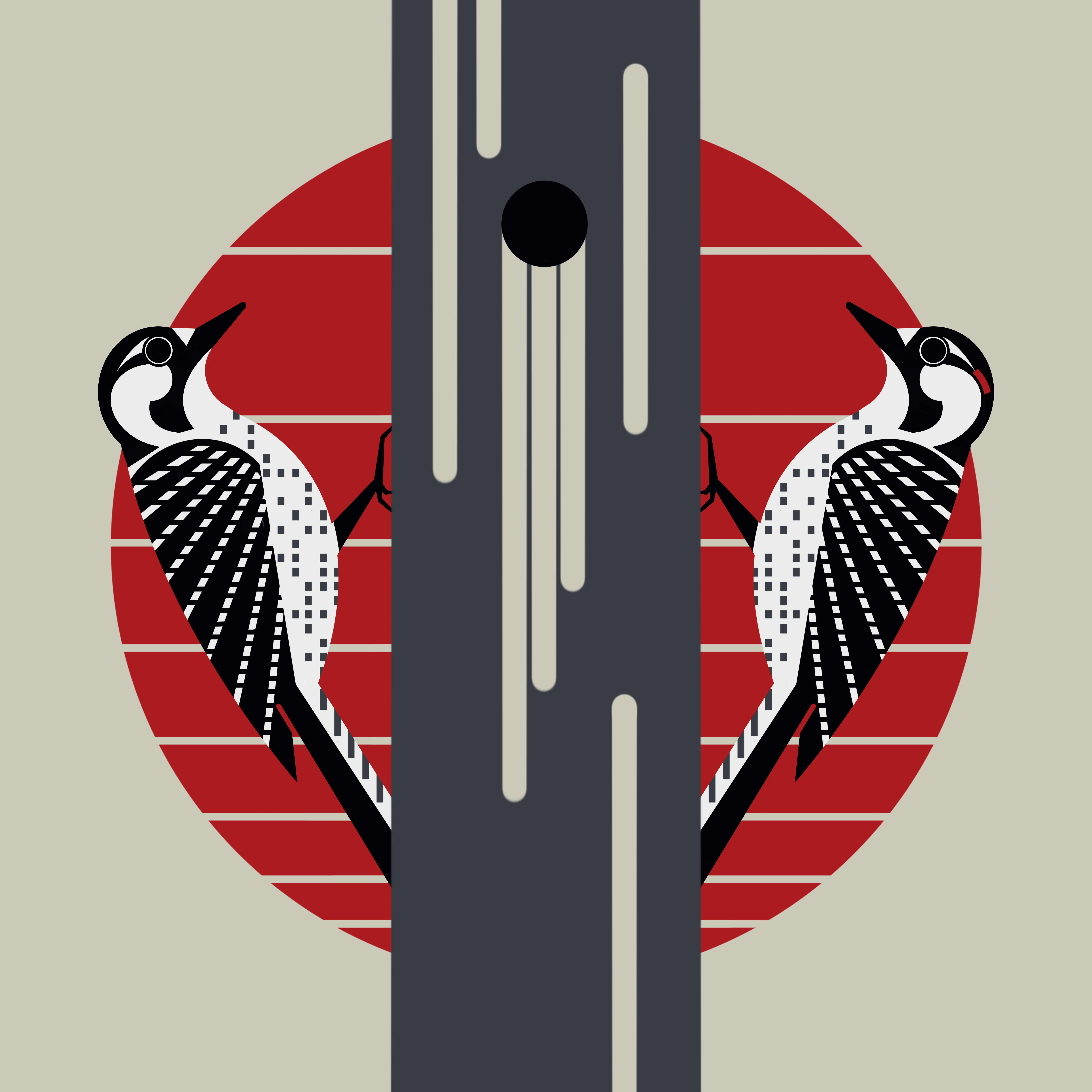5% of the profits support Endangered & Threatened Species.
Endangered Bird
Red-cockaded Woodpeckers live in family groups and cooperate to raise young.

©Juliet Whitsett |Social: @juliet_whitsett_art
Purchase prints: HERE
"The endangered red-cockaded woodpecker (RCW) is a small black-and-white woodpecker, about the size of a cardinal. Only the male has any red marking, and this is just a short streak on both sides of the head above the cheek. The red streak of feathers is difficult to see in the field.
Habitat for Roosting and Foraging:
The red-cockaded woodpecker lives in open, mature pine forests across the southeastern United States. It is different from other woodpeckers in that it makes its cavities for roosting and nesting in live pine trees. Most other woodpeckers construct their cavities in dead trees. The older pines preferred by the RCW are often infected with a fungus called red heart. This fungus softens the wood in the center of the tree, making it easier for the RCW to excavate its cavity. Red-cockaded woodpeckers in East Texas can reside in pines forests with loblolly, shortleaf, longleaf, or slash pines.
RCW cavity trees are characterized by a round cavity entrance about 2 inches in diameter and numerous “resin wells” that ooze sap. Resin flowing down the face of an RCW cavity tree from the wells and entrance hole gives the appearance of a melting candle. This resin barrier helps to protect the nest from the RCW’s major predator, the rat snake. The bark of active RCW cavity trees may also have a reddish appearance on part of the trunk from the RCWs flaking off layers of the bark. Abandoned RCW trees would have dry, gray resin and the bark of the tree and resin wells would be its normal gray-brown color. The cavity entrance may be enlarged by other woodpecker species.
RCWs require adequate foraging (food gathering) habitat. Their diet consists mostly of insects, spiders, centipedes, etc. that are found on, under, and in the bark of trees. They are also known to eat small berries and seeds. Good foraging habitat consists of large stands with pine trees 10 inches in diameter and larger. RCWs will occasionally forage on hardwoods as well. A good herbaceous groundcover of grasses and forbs is important for insect production. The stand needs to have an open, park-like character. Foraging stands should have little hardwood and pine midstory and few overstory hardwoods.
Family Life:
Red-cockaded woodpeckers do not migrate. They live in family groups, ideally consisting of a mated pair and one or more helpers. Helper birds are usually male offspring of previous breeding seasons. There is only one breeding pair per group. All members of the group help build cavities, defend the group’s territory, incubate eggs, and feed the young.
Nesting season is March through July with egg laying generally occurring in April, May, and sometimes June. The female lays her eggs in the breeding male’s roost tree. The eggs hatch in 10 to 12 days. After hatching, the nestlings remain in the cavity for about 26 days. When the young birds leave the nest, they stay with the group for a few months. Later, the young juveniles may disperse to other areas. A male may remain with the group to become a helper.
Harvesting of timber is compatible with RCW management. As long as basic habitat requirements are met and maintained, timber can be harvested in areas with red-cockaded woodpeckers (except during nesting season). Methods that favor leaving enough of the larger, older pines as well as planning for an on-going supply of older pine trees are acceptable.
Distribution:
Most of the red-cockaded woodpeckers in Texas occur on National Forest lands. They are also on State lands, investment company lands, and non-industrial private lands. All four of the National Forests in Texas have red- cockaded woodpeckers that can be viewed by the public. The W. G. Jones State Forest south of Conroe and the I. D. Fairchild State Forest between Rusk and Palestine also have RCWs. Red-cockaded woodpeckers are known to occur in the following counties in East Texas: Angelina, Cherokee, Houston, Jasper, Montgomery, Newton, Polk, Sabine, San Augustine, San Jacinto, Shelby, Trinity, Tyler, and Walker.
For more information on the red-cockaded woodpecker and its habitat requirements, contact the Texas A&M
Forest Service at (936) 639-8191 or your local Texas Parks and Wildlife Department office.
Information generously provided by:
Donna Work, Biologist with Texas A&M Forest Service
COLOR PALETTE SAMPLED FROM IMAGES OF THE RED-COCKADED WOODPECKER:

IMAGE:

Images courtesy of Donna Work

RANGE:
https://www.allaboutbirds.org/guide/Red-cockaded_Woodpecker/maps-range
BIODIVERSITY OF TEXAS SERIES:
With roughly ~150 threatened and ~75 endangered species in Texas alone, artist Juliet Whitsett has been learning about and sharing the importance of biodiversity. Through the process of developing species-derived color palettes sampled from crowd-sourced images, Whitsett creates original artworks that draw inspiration from these distinctive palettes, as well as the lives and forms of the rarest and most at-risk. Collaborating closely with scientists and leading experts, she continually seeks to deepen her understanding of these species, contributing to both environmental education and conservation.
SOURCES:
iNaturalist: https://www.inaturalist.org/taxa/792993-Dryobates-borealis
Communication with Donna Work, Texas A&M Forest Service

